Takato Cherry Blossom Festival 2024 (2)
I am now at Minami-guruwa of the Takato Castle Ruins. Here I cross a bridge.
The bridge is called the “Hakuto-kyo Bridge".
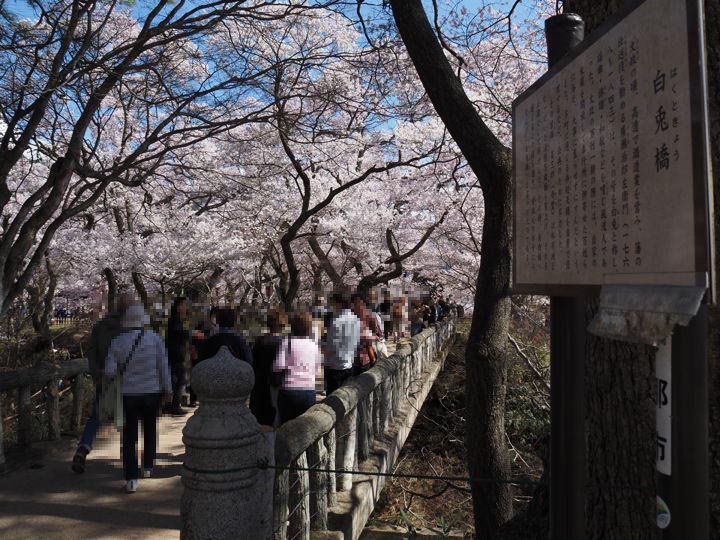
There is an explanatory board in front of the bridge, so I will summarize the contents of the board.
Hirose Shozaburo bought “Hodo-in-guruwa" and donated it as the park. The bridge was built at that time. The name “Hakuto" derives from the pen name of haiku of his grandfather, Hirose Jirozaemon.
However, there is no mention of when the bridge was built. (I am more interested in that…).
The Localwiki Ina site has a page on the Hakuto-kyo Bridge, which states that the first bridge was built in 1934 and the current bridge was replaced in 1970.
The columns from 1934 are still there, and they have some letters engraved on them. So I looked back at my photos and found one photo that showed the letters on a column.
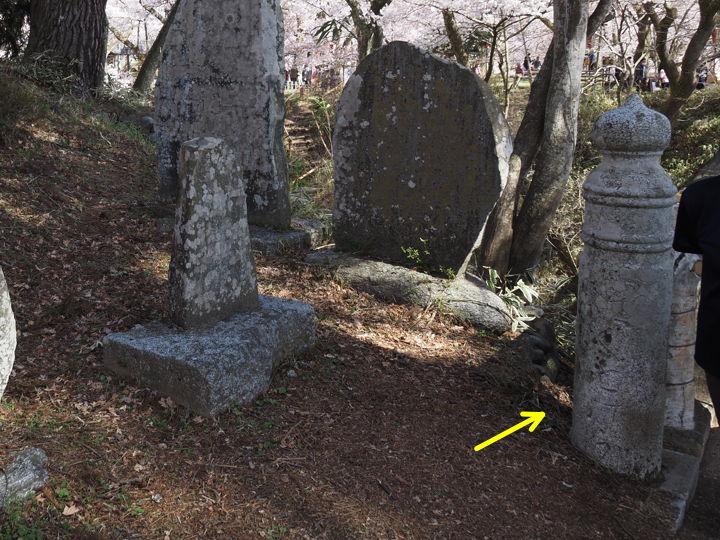
It is hard to make out in this picture, but it is written in hiragana, “Ha ku to ke u" (pronounced “Hakutokyo").
I should have taken pictures of the other pillars as well.
Across the bridge is the Hodoin-guruwa. Located at the southern end of Takato Castle, it is called this because there used to be a temple called Hodoin.
The stone monument seen over there is a monument with haiku poems by Hirose Kiheki and Kawahigashi Hekigoto. Each haiku is inscribed on both sides of the monument.
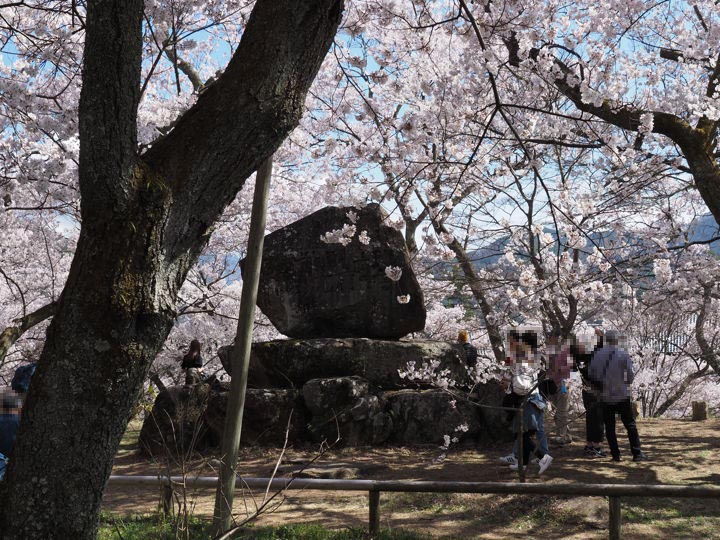
This one is by Kawahigashi Hekigoto and is inscribed with the words, “Nishikoma wa hadarete-shio hada nugu kumo wo".
(This represents the scene where the snow on Nishikomagatake has melted and the shape of a horse can be seen on the surface of the mountain.)
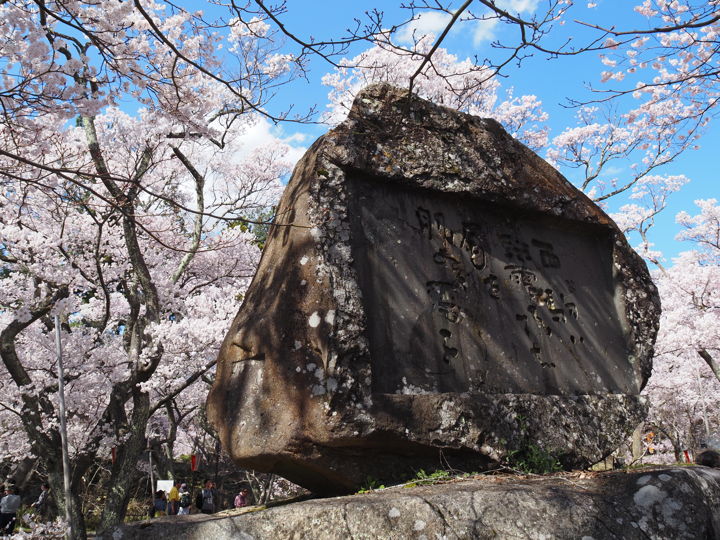
On the opposite side is a haiku by Hirose Kiheki, “Hadare takane asakage uguisu naitei". (Vanishing snow, high peaks, morning light, a nightingale is singing.)
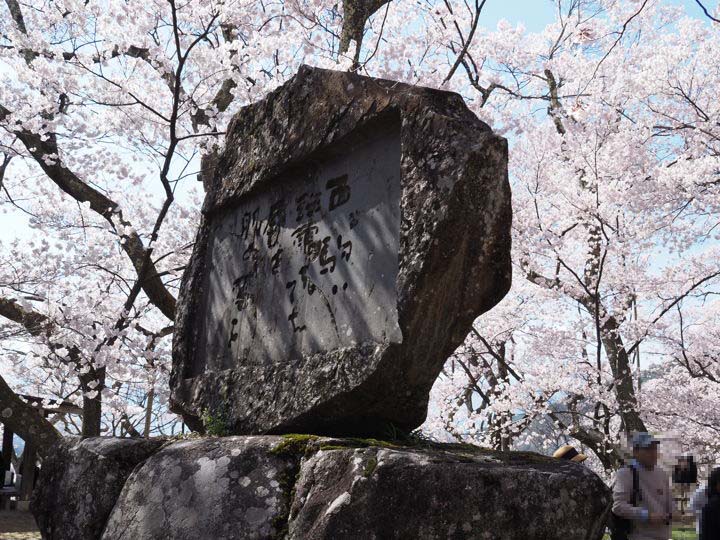
The explanatory board on the monument tells us about Hirose Shozaburo, whose name was mentioned at the Hakuto-kyo Bridge. Hirose Chichi means Shozaburo (Kiheki is his haiku name), and he was a mine manager. He was from Takato, and also said to have been instrumental in the construction of the Takato-kaku. It would be easier to understand if this information could be written on the explanation board of the Hakuto-kyo Bridge.
The south exit of the Takato Park is located on the east side of the Hodoin-guruwa. To get to the museum, you have to leave the park once, but you can re-enter the park if you have the admission ticket you bought the first time the day.
The signboard in front of the museum. An exhibition is being held to commemorate the 150th anniversary of Ikegami Shuho’s birth.
The painting used also in the leaflet is “Duel," created in 1943.
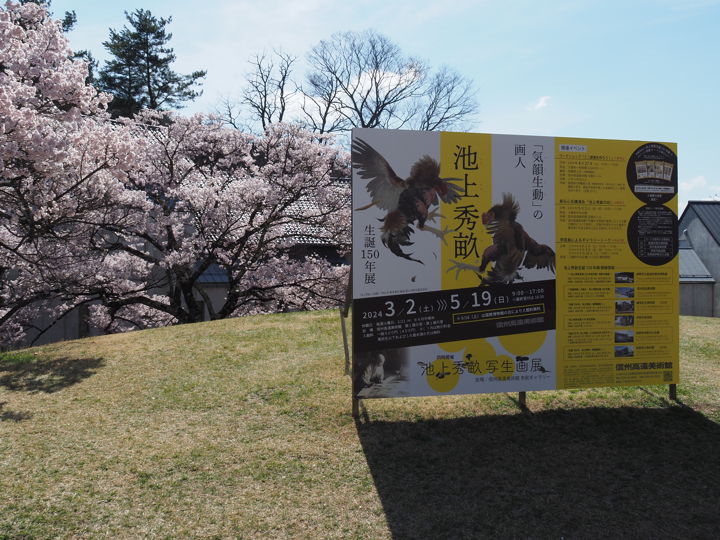
I had heard the name of Ikegami Shuho (1874-1944), but had no idea who he was.
He was a Japanese-style painter from Takato Town, active from the Meiji period to the Showa period. 1874 was the same birth year as Hishida Shunso, who was born in Iida. Although it seems they did not interact directly with each other.
This is the entrance to the museum. Let’s go inside. (No pictures of the inside).
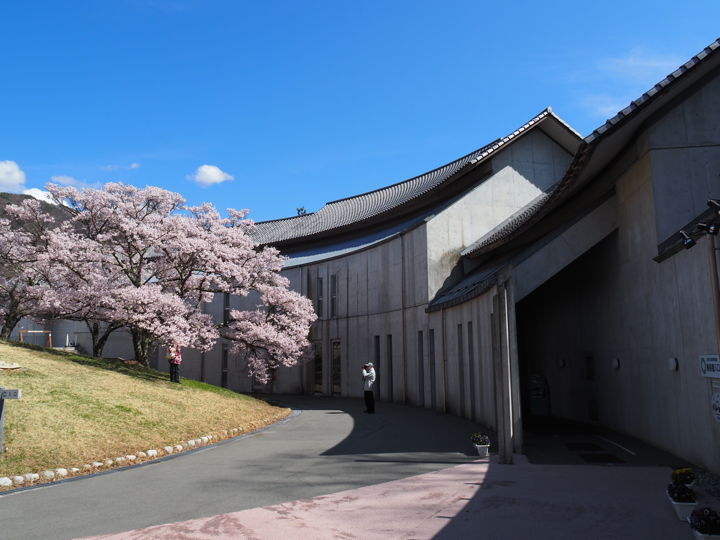
What I liked was sketches on display at the end of the exhibition. I got the impression that the artist was very serious, or rather, sincere.
The exhibition on the 150th anniversary of Ikegami Shuho’s birth is not only being held here, but also at other museums.
In addition to the Shinshu Takato Museum of Art (March 2-May 19)…
* the Ina City Takato Museum of History, “Shuho’s Painting" is held from February 23, 2024 to June 16, 2024.
*The Nerima Art Museum holds “150th Anniversary of Ikegami Shuho’s Birth: High Definition Painter" from March 2 to May 19, 2024.
This is a traveling exhibition, and will come to Nagano Prefectural Museum of Art after this.
*Nagano Prefectural Museum of Art, “150th Anniversary of Ikegami Shuho’s Birth: High Definition Painter" will be held from May 25 to June 30, 2024.
*The “150th Anniversary of Ikegami Shuho’s Birth" exhibition at the Ina City Sozo-kan holds from March 16 to May 27, 2024.
*At the Nagano Prefectural Ina Cultural Hall, “150th Anniversary of Ikegami Shuho’s Birth: He Just Loves Painting" holds from March 20 to May 12, 2024.
All other museums except the Nagano Prefectural Museum of Art are currently holding exhibitions.
Well.
I leave the museum and enter Takato Park again. From here, I plan to return to the Takato-kaku.
Let’s check under the Hakuto-kyo Bridge. I passed under the bridge and took this photo looking back.
As I wrote above, the bridge was replaced in 1970.
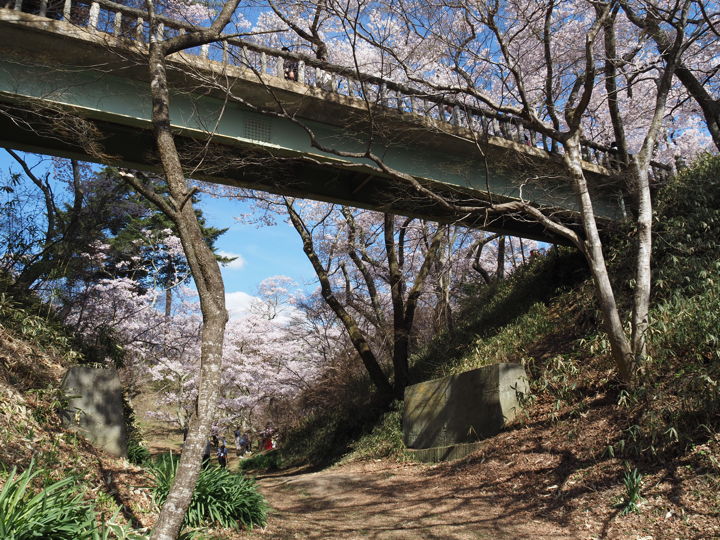
A short walk from here, there was a stone monument called “Muji no hi" (a stone monument with no letters).
The local people planned to build a monument in honor of Isawa Takio (1869-1949), a politician from Takato. However, Isawa said, “It is a terrible mistake to erect a monument to a politician. It is said that even if a politician has governed well, a person’s merits and demerits are revealed only when the lid of the coffin is covered. I will never allow a monument to be erected."
But the local people’s feelings toward Izawa grew even stronger, and without permission, the monument was erected without engraving the words.
I am almost at the Takato-kaku. There are food stalls around here.
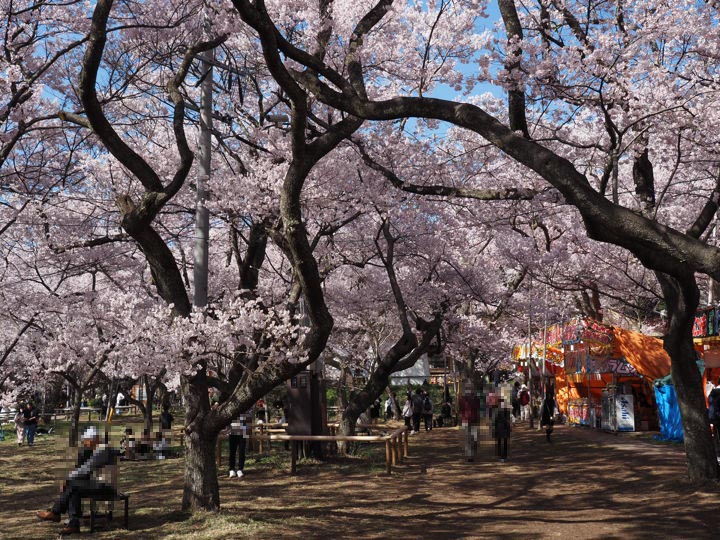
I have arrived at Takato-kaku.
I will write a separate article on Takato-kaku in the “Buildings of Japan" category.
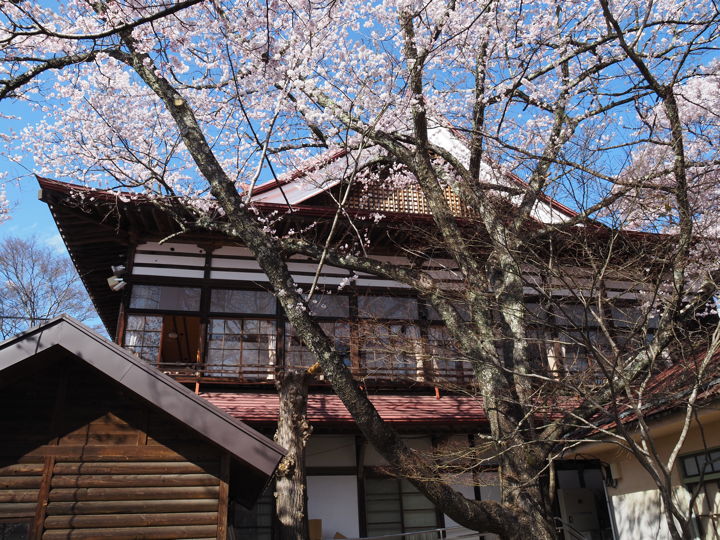
Finally, I will end this article on the Takato Cherry Blossom Festival by quoting the description of the cherry blossoms in Takato from a sightseeing guide published more than 80 years ago, “Ko-Nihon Fuukou: Shinano, Nobi Ryouetsu, etc." Ko-Nihon-sha (1937).
“Cherry Blossoms in Takato
In Takato Park, there are the largest number of cherry trees, and the park is almost completely covered with flowers. The elegant appearance of the old trees and the beautiful color of the flowers, including light red, combine to create a beautiful sight. In addition, the white snow of Nishikomagatake can be seen across the flowers. It is not too much to say that the view is the best in Japan. The cherry blossoms bloom from mid-April to early May, and are not only the primary recreational activity of the local people, but also attract many visitors from large city. The town is making great efforts to protect the cherry trees.
In the center of the park, a large building named “Takato-kaku" was constructed with the donations of Ikegami Shuho, Yajima Ichizo, Hirose Shozaburo, and Komatsu Denichi, all of whom are prominent local residents. It is used as a place to view and rest when the flowers are in bloom."
It says that the flowering period was later than now, from mid-April to early May.
The term “Ko-nihon" is an unfamiliar one, but it seems to be used to refer to a region of high elevation with a mountain range. Specifically, it refers to Nagano Prefecture and some of its surrounding prefectures.
“Ko-nihon-sha" was apparently a publishing company located in Matsumoto City.
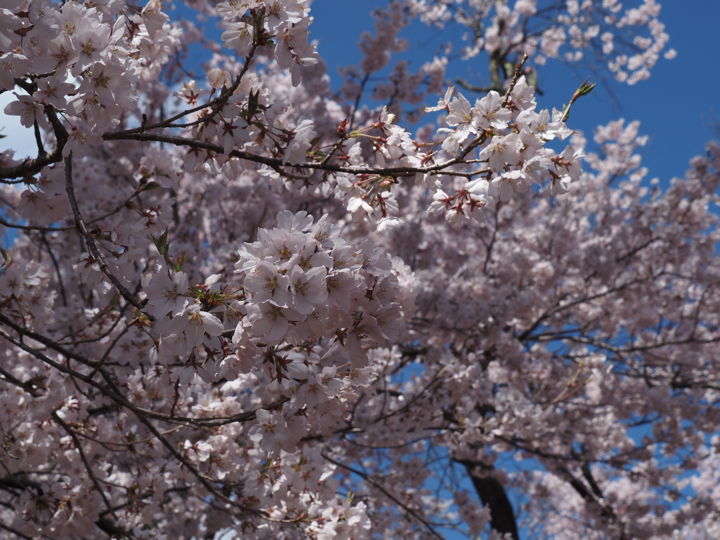
[Addendum] (2024.04.17)
The names of the donors of the Takato-kaku are mentioned in the citation of the “Ko-Nihon Fuko". One of them was listed as “Yajima Ichiji" in this book, but other books says that his name is Yajima Ichizo, so the description in the above citation has been changed to Yajima Ichizo.
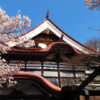
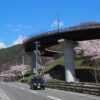
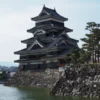
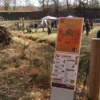
Discussion
New Comments
No comments yet. Be the first one!